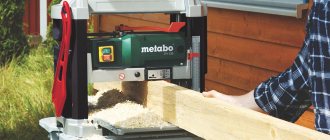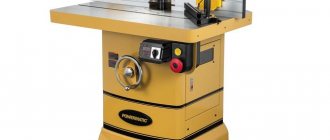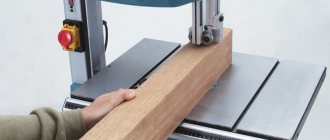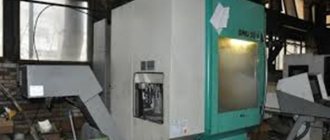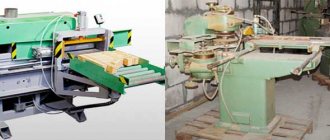CNC lathes are well-proven equipment designed for mass production. Thanks to it, it becomes possible to make parts with high precision, which is important for lathes.
CNC allows it to improve its operation without human intervention, making it almost ideal for turning work and giving it autonomy.
Numerical control - what we're talking about
In a highly competitive environment, manufacturers are required to supply high-quality products to the market in large volumes. It is difficult to do them manually, when the human factor affects the speed and productivity of labor, the possibility of errors and irregularities, and in some cases does not allow the plan to be realized. But with the use of computer technology, the process is much more productive. In particular, the rate of production increases, as well as increased accuracy. Classic equipment in workshops is controlled by a person. He is responsible for directing the movements of the main parts of the machine. But CNC machines are equipped with a computerized system that itself regulates all movements and also allows for the smallest adjustments. The control command gives numeric codes to all elements. Programming takes place in software; engineers, furniture designers, and planners work with it. One language ensures precise communication of requirements. Since the task remains in memory, you can select one of the command sets at any time to move from the production of one part to another. Let's explain the term: CNC machines are “smart” factory equipment with numerical control. They are gradually replacing classical units in large production workshops, but due to their high cost and difficulties in handling (knowledge and basics of programming and design in software such as AutoCAD are required), they are not common in private use.
Working principle of CNC
The functioning of the CNC machine is carried out in the following sequence:
- To begin with, the part processing program is entered into the device’s control unit.
- It carries out the entire data processing process, prepares all motion commands and sends them to the drive system.
- The drive controls the movement and speed of the product blocks.
- The feedback system remembers data about the location and speed of movement of the axes and sends a signal to the control unit.
- The BUS compares the feedback signals with the initial ones and if there are errors, it corrects them and sends new signals to the execution mechanism to correct the process.
- A control panel with a screen is used to view commands by the operator.
Operating principle and brief description of the system
This is a linear sequence that consists of the following intermediate actions:
- the person sets the basic parameters, designs the manufactured model in a graphic editor, and is responsible for the correctness of the drawing and characteristics of the product;
- a computer program processes graphics and text data, calculations, systematizes them, and translates them into a machine-readable format;
- the control system stores mathematical formulas and numerical values, develops a sequence of actions and issues commands to all elements of equipment;
- working tools produce mechanical vibrations according to a given algorithm, guaranteeing accuracy and speed of movements.
The result is a completed goal, towards which the artificial intelligence worked together with a person. An operator constantly monitors the equipment; he can make adjustments to the operation of the machine, pause it, see and correct problems, and also re-equip it for new tasks. Basically, the program sets the following parameters:
- engine power;
- speed of production of a function;
- moments of acceleration and deceleration to obtain the desired qualities of the workpiece (very typical for manipulations with metal);
- rotation of cylindrical and round elements;
- the direction of movement is especially important in cases of artistic cutting - each bend is determined by an exact mathematical formula.
System classification
To classify CNC control systems, several different signs and characteristics are used:
- The number of axes along which processing is carried out. The simplest jig boring, drilling and lathe machines have two axes. In more complex turning-milling and milling-engraving machining centers, control can simultaneously cover 4 or 5 coordinates.
- Method of controlling actuators. Based on this feature, machines are divided into:
- positional, which carry out processing at specific points, and all movements take place at idle speed of the spindle;
contour ones, which remove material along the entire tool path;
- universal, combining both control methods.
- Positioning method:
- absolute, in which each movement is based on the zero point in the CNC coordinate system;
relative, when each previous point is taken as a temporary “zero” for the next one.
- Opportunities for feedback. CNC systems without OS sensors are currently practically not produced.
The most modern self-adjusting machines “understand” the current position of all executive bodies during processing, compare them with the values specified in the control program (CP), and correct them if necessary.
Design and device of a CNC machine
Classic elements of the unit (they may vary slightly depending on the specifics of the production process):
- bed, that is, a strong base in the form of a table or vertical installation for sawing;
- feed box - it is responsible for all rotations, straight-line movement and bends, how many possibilities the whole device has, generates speed and direction;
- headstock and tailstock, one of which is controlled by a spindle, that is, changes its location (can be installed both mechanically and mechanically);
- calipers - are responsible for fastening and changing tools, they receive movement commands from the feed box, the strength of the element being processed;
- rod mechanisms - tools that perform the actions themselves, that is, various drills, knives, reamers.
In one of the headstocks there is a system with speed switching, this will allow you to rotate the workpiece with the required acceleration. The second is necessary only for strong fixation and is associated with instrumentation. The operating principle of CNC machines is automated control of this entire structure. The commands are sent directly to the feed box, from where mechanical forces already originate, affecting all other parts.
CNC architecture
All CNC systems have a similar architecture and consist of several components. In the most reliable machines, they are implemented in the form of separate modules, each of which is equipped with its own processor. Inexpensive systems are assembled on the basis of one computer, and its components exist only virtually.
To describe the main components of the CNC, terms from the technical documentation of the Sinumerik CNC (Siemens) were used.
- NCU
. This is the central part of the system, the tasks of which include calculating tool trajectories and supplying control signals to the drives in accordance with the commands of the programmer. - PLC
. This programmable logic controller does not directly participate in controlling the drives, but receives and analyzes signals from them. The module's tasks include controlling signaling devices; external and internal sensors, limit switches, relays, and contactors are connected to it. - PCU
. This is an operator console with signaling devices, a monitor, a keyboard, and digital data transmission and storage interfaces. The main task of the module is to provide communication between the operator or service technician and the machine.
Characteristic
The peculiarity of working on such equipment is that all actions are carried out with precision and minimal human influence. This is due to factors:
- Basically, the CNC is placed vertically, because this way it takes up less space, chips (metal, wood, plastic) are easier to remove from the working surface, there is less risk of clogging, and it is also easier to manipulate large items at an angle that are difficult to load onto a horizontal tabletop.
- Load-bearing structural parts are made of very strong substances, metal alloys, which are additionally reinforced with stiffeners. This need arises due to the possibility of long-term continuous operation with heavy workpieces.
- The lathe type of CNC machine is usually equipped with an automatic interchangeable magazine with cutters and tips, which themselves change as they wear out or when the desired tool is changed.
How to choose?
In order to correctly select a machine for metal processing, it is necessary to carefully study the design features of the available models and study their characteristics.
First of all, you should pay attention to the following parameters:
- parts configuration;
- accuracy and quality of surface treatment;
- machine dimensions;
- maximum weight of workpieces;
- available processing modes;
- device power;
- planned production volume;
- machine performance.
Numerical Control Basics
Let's consider a classification with three subsystems:
- Control is the center, it is from here that commands are issued, the programming language is deciphered, and here contact between the operator and the installation takes place. The processor is located inside the rack, and outside are the screen and buttons. Adjustment is possible using the user interface. There are closed and open systems, the former have a narrow set of functions, adjustments cannot be made to them, often only special programs can provide a new type of work. The latter are easier to control and are tested for compatibility with commands and computer software.
- Drives - mechanics and electronics are concentrated here, which drives all other parts. The engine provides energy to the lead screws, which trigger the processes of rotation of the workpiece, movement of the cutters, etc. To be precise, the device contains several electric motors at once, each of the ready-made ones is responsible for one unit.
- Feedback. This is a series of sensors that collect information about the position and speed of movement of the component parts and transmit this information in the form of mathematical formulas to the control unit for processing the entire cycle and adjustments.
Degree of automation
The following key parameters are distinguished in the control systems of CNC machines:
- Type of drive. The motor can be stepper, stepped or adjustable.
- Control method: continuous, positional, rectangular, mixed.
- How the software is loaded: via flash media, on disk, using magnetic or punched tape.
- How many coordinates can be controlled simultaneously and what is the range of permissible error when entering them.
The number that appears in the machine article after the letter F characterizes the degree of automation of the device:
- 1 — data is typed on the keyboard, a digital display is provided.
- 2 - for a milling or lathe this means a rectangular control method, for a drilling and boring machine - a positional one.
- 3—contour or continuous control. This method is convenient for processing complex parts.
- 4—multioperative surgery. It combines the above functions.
If instead of a number there is a letter “C”, this means “cyclic type”. The algorithm of such machines is cheap and simple, but this is enough to produce series of workpieces of the same type.
Features of numerically controlled machines
The first unique characteristic is the high importance of computer-aided design. At this level, the main activity of the engineer is carried out, then he can only check the correct execution of commands and transfer all subsequent work to adjusters and operation specialists. Digitization of the graphic model into a programming language supported by the CNC system occurs automatically. The two main actions of specialists are adjustment (readjustment) of equipment and supervision of the operation of the machine.
Responsibilities of Machine Operators
The operator's work is often in shifts, flexible schedules, night and day shifts. This ensures continuous work in production. The job requires both mental and physical activity and the operator's responsibilities include the following:
- Preparation and cleaning of the workplace;
- Computer modeling of parts;
- Program revision, installation on new models;
- Monitoring and inspection of working programs, correct manufacturing;
- Selection of working tools for the machine (for example, knives, drills, cutters), installation of tools, inspection and repair;
- Control and measurement of compliance with the technical specifications of manufactured parts;
- Installation of blanks, removal of finished parts.
The operator will need developed spatial thinking, as well as a technical mind. Reaction speed, perseverance and concentration.
As a rule, this work has no special restrictions; both men and women can do it. However, if a woman decides to become a machine operator, she must have special endurance. The same type of actions/operations will be required throughout the entire shift. If you have vision problems, a tendency to arthritis, breathing problems, or joint problems, then engaging in this activity is not recommended.
If you like the process of creating metal products, then working as a CNC machine operator is the right decision.
Only those specialists who have received the rank are allowed to work with the equipment.
Pros and cons of the job:
| Advantages | Flaws |
| Highly paid profession on average 50,000 – 70,000 rubles per month, in Moscow | Dangerous profession requiring concentration |
| Career | Not available to everyone, specialized education required |
| You can get a job even after completing the courses | Requires both mental and physical strength |
| Stable demand for the profession in the labor market | |
| Interesting, exciting job for people with a technical mind |
Areas of application
In fact, you can do most of the operations that can be done with classic manually operated units. You can process:
- wood, solid wood or blocks, plywood, chipboard and other types of compressed shavings;
- metal structures - from the smallest bearings to large sheets and massive automotive parts;
- stones (granite, marble) and other naturally formed rocks;
- plastic and other synthetic materials of varying hardness.
For each type of product presented, it is necessary to re-equip. The main differences are how the workpiece will be secured and what cutters and tools the mechanism will be equipped with. The program gives many commands, including:
- cutting, sawing, cutting off the top layer or end side;
- milling (a cylindrical rotating element undergoes completely symmetrical processing);
- making holes and cavities;
- engraving;
- carving and much more.
Since a CNC machine works on various materials, it is used in various industrial areas - from sawmills to jewelry and mechanical engineering.
What are the categories?
Access to the machine begins from the second category, which is the responsibility of specialists:
- Specialists of the second category process parts with a simple design, usually 12 - 14 qualifications, special equipment is configured to perform the same type of processing. As soon as specialists complete the second category, they can move on to designing bushings and screws. Responsibilities include drilling holes (through and blind types) with a diameter of no more than 24 millimeters. Large or medium sized parts are produced from extruded profile blanks.
- For specialists of the third category, responsibilities are provided for the manufacture of parts of medium and high levels of complexity. Metal parts according to 8 – 11 qualifications. In this case, the machine is already configured to produce several types of parts, which will require three or more processing tools. Employees may be assigned to turn external contours, order milling work, or thread cutting. Holes larger than 24 millimeters in diameter are allowed. May require processing using a rotary lathe.
- Employees of the fourth category receive an increased level of complexity in the production of parts for 7 – 10 qualifications. This specialist has enough experience and knowledge to operate several machines. Perhaps he will be entrusted with the maintenance of a multi-purpose machine, as well as the robotization of equipment. A specialist of the fourth category receives turning work and finally processes parts that are quite complex in their geometric structure. Engaged in the processing of large parts (turbine and compressor housings, belts, beams, wing tips, and so on).
- Specialists with the highest category - fifth, carry out work at 6 - 7 qualifications on machines specially configured for the production of complex parts. On such machines, periodic rearrangement or installation of fastening systems is necessary.
The work is complex and requires a clear mind, so specialists need constant confirmation of their qualifications, and advanced training courses are regularly opened for specialists. According to the rules, a specialist must receive each rank in turn, each new rank obtained gradually. Even if a specialist of the second rank performed work available only at the fourth rank, in order to receive the appropriate rank, he must first receive the third.
But it is also worth answering that if a master does not pass the qualification during advanced training courses, the old one is not taken away from him, after some time he can try again.
Advantages
There are many advantages, among them:
- high speed;
- increased productivity;
- long wear of parts;
- no risk of exposure to human factors;
- reduced vibration and noise during production;
- the ability to cut products of non-linear configuration;
- ability to retool and work with various materials;
- simplified task for employees.
With a large number of orders, the need for constant long hours of work, as well as when implementing design solutions, purchasing a CNC machine is cost-effective. But for small-scale production, costs often exceed profits.
Some restrictions
If operations take place on old equipment, then their code does not include many possibilities, for example, movement can only be translational or rotational, but not figured. This is due to the limited coordinate axes. The older and more budget-friendly the model, the slower its speed of processing information, issuing commands, and at the same time the slower the completion of the cycle. It is better to purchase modern units if you do not want poor functionality. Also, not all engineers will be able to handle them, but only specially trained people.
Requirements for control systems
To ensure high feed rates and movements of the milling cutter, digital controllers are needed that can control the processes of acceleration and braking. Together with the built-in remote control of an industrial PC, they can operate without human intervention. And if they are connected to the company’s computer network, even remote monitoring is possible.
Today, controller developers have robust, real-time versions of Windows NT that take full advantage of the Internet. CNC systems use stepped microprocessors, making it possible to process 1100 5-axis blocks per second. In addition, preliminary processing of information in programs that involve machining parts with a milling cutter with a large amount of data will not be necessary.
As for tooling systems, it is feasible to monitor the condition of milling tools, the data of which is transmitted back to the controller. Now one device for automatic tool changer can serve several machines.
There are advantages of HAAS CNC system for milling machine. It is intuitive and easy to learn in a short time. This precision equipment, operating with increased accuracy, has a large number of standardized components, which helps reduce the cost of its maintenance.
Common terms used to describe CNC machines
In machine tool equipment there are words that denote narrow concepts. Let's look at them:
- two-axis project - movement can occur only in two planes, without affecting the vertical;
- 2.5-axis - the Z axis (up - down) is present, movement along it is possible, but not simultaneously with the other two;
- 3-axis – all measurements at one time;
- 4-axis - the ability to rotate is added to the above.
In the article we explained what CNC machines are and what the abbreviation stands for. Be careful when working with this equipment. We invite you to familiarize yourself with our range of band saw products. for 15 years on the Russian market. During this time, we covered almost all cities of the country.
Groups of metalworking equipment
Among the metalworking equipment of the main groups (turning and milling), it is worth highlighting others:
- sawing and circular cutting machines;
- band saws, capable of longitudinal sawing of workpieces;
- vertical drilling, in which the spindle is located at the top;
- drilling and slotting;
- grinding and cross-cutting machines for high-quality surface processing.
What these units have in common is that they work with any metal. They are also united by the presence of a bed on which the main “unit” – the metalworking element – is installed. The device has an electric motor, a feed platform, various clamps, and working equipment - according to the specifics of the technological operation being performed.
Next to the massive and large industrial options, mobile desktop machines and mini-machines for metal processing used in jewelry and engravers look very compact.
